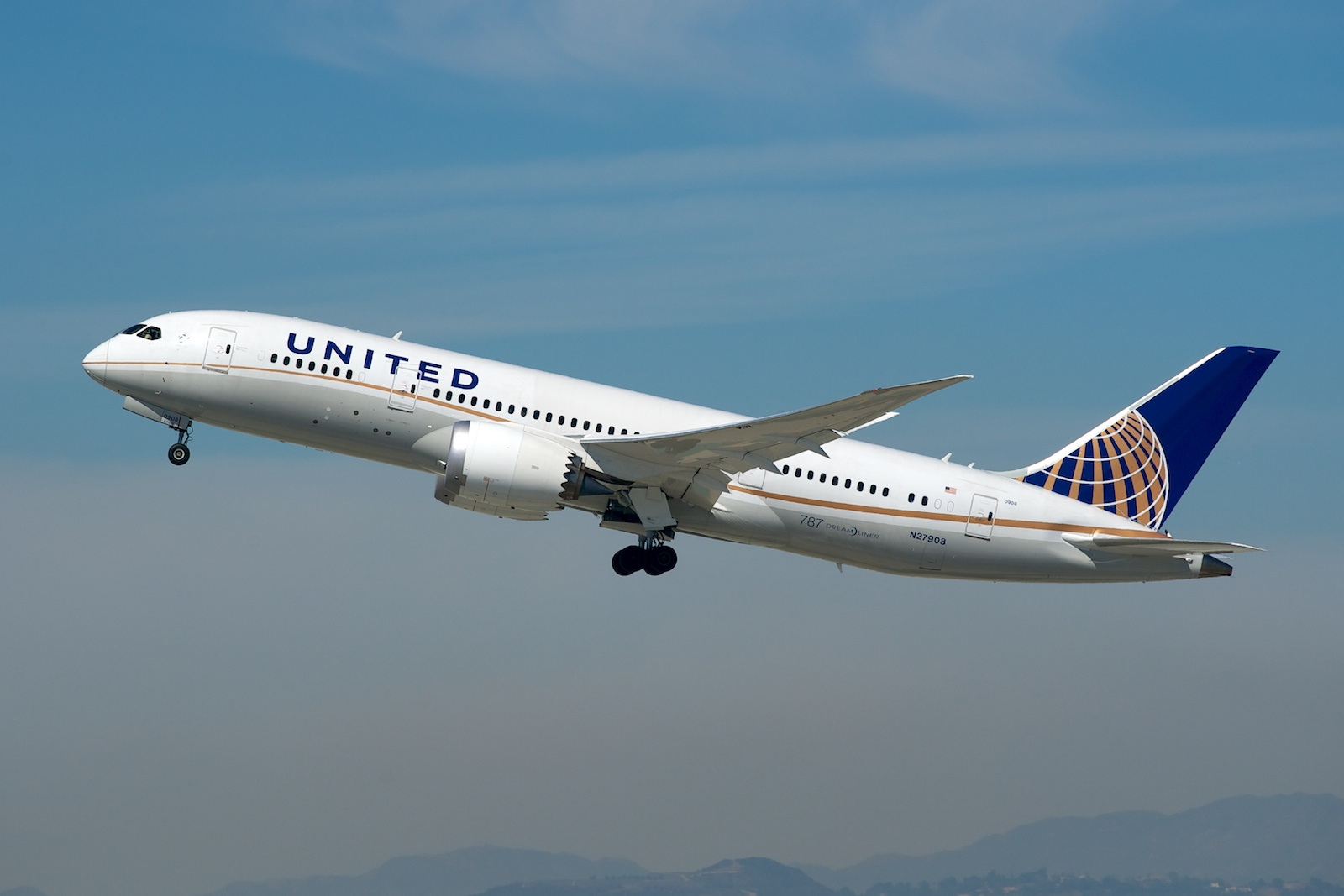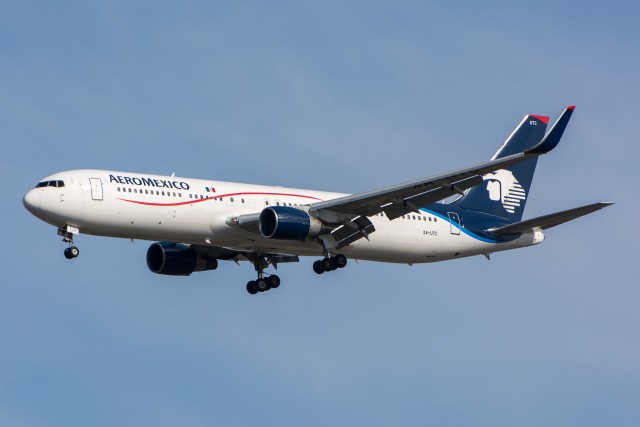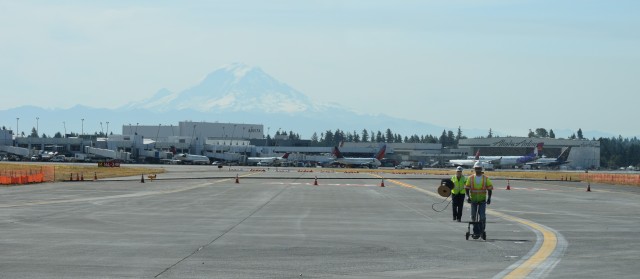
Taxiway Mike at Sea-Tac Airport is closed during reconstruction of runway 16C/34C – Photo: Lauren Darnielle | AirlineReporter
Last week, I had the opportunity to get a behind-the-scenes look at the construction currently in progress on Runway 16C/34C at Seattle-Tacoma International Airport (SEA, aka Sea-Tac). The center runway closed on May 4th for a complete reconstruction and is scheduled to re-open October 30th, so the project is already well underway.
At 9,426 feet in length, 16C/34C is Sea-Tac’s second-longest runway, consisting of over 4,000 concrete panels, each measuring 20 feet x 18.75 feet. Needless to say, reconstructing a runway is a huge undertaking, so there was plenty to see on our tour!
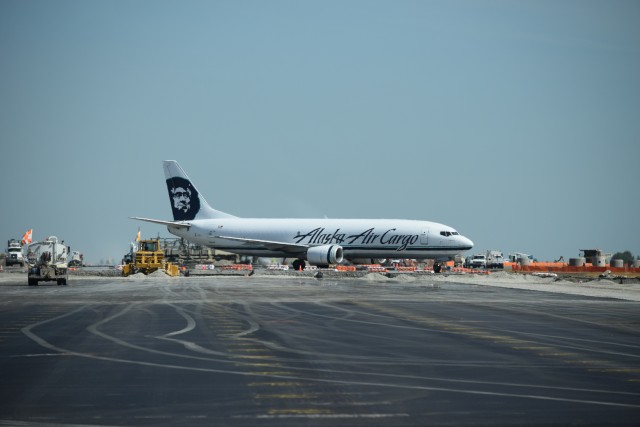
During construction, it is business as usual on the other two runways and the open taxiways – Photo: Lauren Darnielle | AirlineReporter
Originally built in 1969, 16C/34C is the oldest runway at Sea-Tac. It was designed to last 20 years, so it has more than done its duty. Upon completion of this reconstruction project, all three of Sea-Tac’s runways will have been constructed or rebuilt within the last seven years. 16R/34L (the hotly-contested ’œthird runway’) was built in 2008, and the longest runway, 16L/34R, was reconstructed in 2009.
’œWe continue to grow at a tremendous rate and the reconstruction of Sec-Tac’s center runway is vital to serve the demands of our region with progressive steps to improve safety, efficiency and environmental stewardship’, said Mike Ehl, Director, Aviation Operations. ’œThis will bring all of our runways up to modern standards for reliable use for decades to come.’
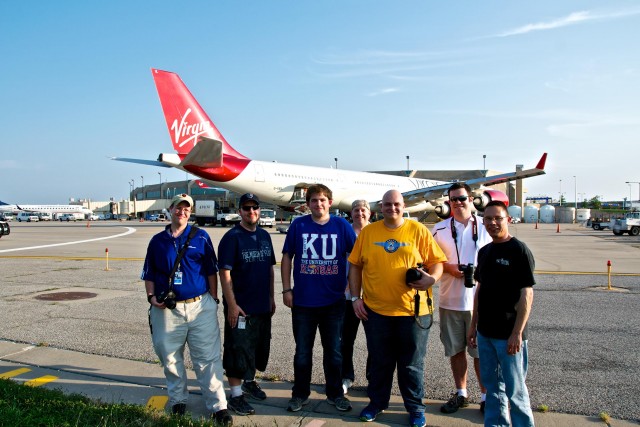
Aviation enthusiasts pose with a Virgin Atlantic A340 – Photo: Daniel Palen
As an avid plane spotter, I’ve had my fair share of run-ins with the curious/uninformed public, skeptic law enforcement officers (LEOs), airport staff, and even airline employees. Typically these exchanges go positively and, with luck, without missing out on any good shots: “Who are you? What are you doing? Why are you taking photos in a post-9/11 world?” To which I respond: JL Johnson, frequent traveler, airline reporter, and, most importantly: AvGeek.
Typically I tell them about my passion and how [whatever organization they represent] is generally supportive (or at least tolerant) of such activity. It’s not uncommon that I pull out an iDevice and show the inquirer samples of my work and/or tweets endorsing or acknowledging spotting from various institutions (I keep a list of tweets handy for this very reason – you should too).
While doing homework on the environment in advance of spotting is key, I find that the more geeky and passionate I make the conversation the quicker a situation is defused. Apparently geeks can’t be bad guys. For whatever reason, people respond better not to fact, but passion/emotion. So I bring both.
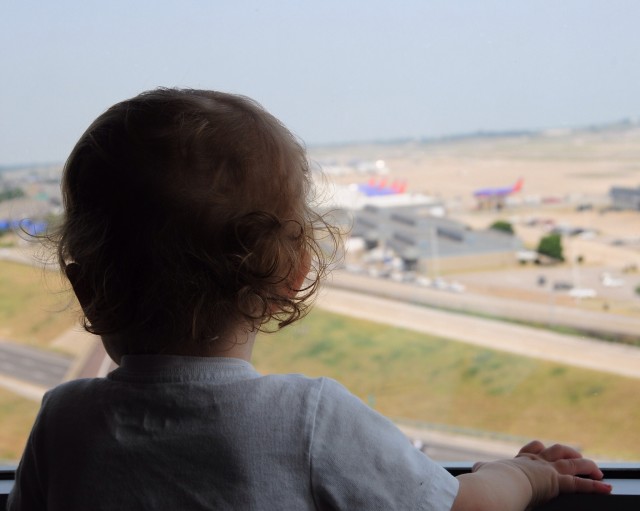
Plane spotting – even toddlers do it! Photo: JL Johnson
That’s the typical interaction. Alas, my attempts to convince folks that I’m not a terrorist and that my telephoto lens doesn’t shoot plane-crippling ray-gun beams are not always successful. I had one such interaction recently at Chicago’s Midway Airport (MDW) which I’d like to detail if only to clear the air about what’s generally allowed vs. not, how to handle these encounters, and to assure my AvGeek brethren that it’s typically OK to take photos of publicly-visible property from public areas. But…your results may vary.
In part one of this series I provided an overview of my airline sampler trip (5 airlines over 4 days) and offered my thoughts on my very first flight with Virgin America, from Dallas to San Francisco. Here we pick back up at SFO for a quick journey down to LAX in the first class cabin aboard a United 787-8.
This leg of my airline sampler was actually the catalyst for the entire trip. I happened to stumble upon an announcement that United would be briefly returning the 787 to domestic service for once weekly (Friday) service from SFO-LAX. I didn’t get the opportunity to check out the Dreamliner when United had them on domestic runs when they were first introduced. After a number of friends booked their own 787 experiences only to be disappointed by the wrong plane at the gate, due to operational issues, I decided to hold off. I was skeptic for too long and wound up missing my opportunity. Some time had passed and United now had a number of 787s in service, so I figured that the time was right.
The economy fare was very attractively priced at a meager $72.10 — what a bargain! When United.com solicited me to pay an extra $29 for economy plus I jumped at it.
As a Boeing fan-boy, I was excited, but that joy would soon evaporate like spilled Jet A on a hot day. It pains me to report that problems began before I ever stepped foot on the plane’¦
I recently had the opportunity to experience the premium product on two major North American (non-US) carriers. I thought it would be a good chance to evaluate and compare the two different products and see how they stack up! I was invited to Buenos Aires, Argentina, by a good friend of mine whose fianc is Brazilian. They planned a trip to Argentina and invited close friends. Given that going to South America would mean I had visited all the continents (well, apart from Antarctica), I had to agree. In planning this trip, I decided to use miles to make the trip more affordable.
Much to my surprise, there was no point in booking a flight one-way using miles and the return flight paying cash. Interestingly, it cost the same amount (or more) for a one-way ticket to Buenos Aires, compared to a round-trip ticket. This just further reinforced my plan to use miles. I was able to use Alaska Airlines miles to fly Aeromxico on the flight down, and United miles to fly Air Canada on the return. Funny how that can work, right?
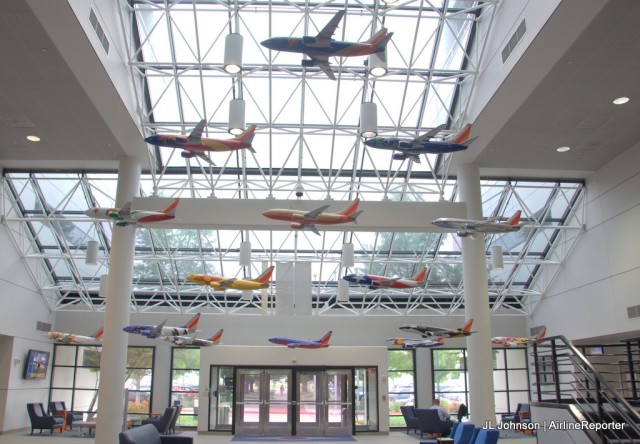
Large models illustrating Southwest’s special liveries hang in the atrium of the company’s HQ
For years I have connected at Dallas Love Field and peered across the aircraft operations area, staring at the home of Southwest Airlines, hoping to one day visit LUV HQ. In the effort of transparency, I’ve made little attempt to conceal my preference for the airline, and we’ll discuss why I think that they’re the best in a bit. But here’s a hint: It’s the culture.
I have a hand-full of friends who work for Southwest and follow a bunch of their employees on Instagram who occasionally post photos from the inside. My desire for a visit intensified when I became aware that the company had recently opened a large addition to their Dallas footprint, just across the street from their long-standing centralized DAL-based HQ. The building, affectionately known as TOPS (for Training and Operations Support), drastically expands the company’s capabilities and makes room for employees of the largest domestic airline to spread their wings.
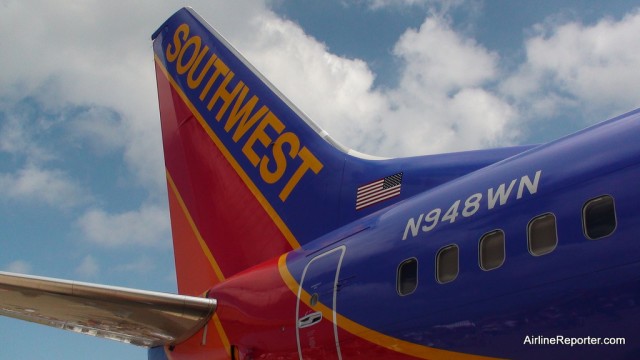
Southwest Airlines tail – Photo: David Parker Brown
After 12 years in corporate America, I have become a self-described boring, stodgy, business-type guy. I think that’s one of the reasons I am so attracted to Southwest’s culture. Because, it’s tough to not have a fun time around people who clearly enjoy their careers and are vested in the mission of their company.
On a recent late-night flight, an attendant came over the intercom to tell us they were turning down the lights and that we were welcome to turn on our overhead lighting. “If you want, push the button with a picture of a light bulb on it.” She continued, “However, pushing the button with the picture of a flight attendant on it will not turn on the flight attendant.”
It was late, we were all tired, and I think it’s fair to say the cabin had let their guard down. This unexpected bit of humor solicited a chuckle from me and a large portion of my 737-trekking peers. It’s these small, unexpected, fun experiences after a long draining day of meetings, charts, and presentations that I have come to rely upon as a part of my decompression ritual.




